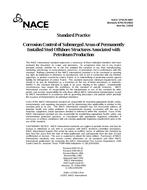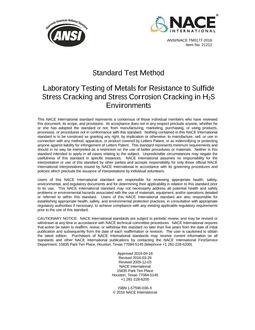Click here to purchase
This standard recommended practice details acceptable practices for the design, fabrication,installation, and maintenance of steel-cased metallic pipelines. It is intended for use by personnelin the pipeline industry.
The use of cased carrier pipe for pipelines crossing under highways and railroads is commonpractice in the industry. The first cased crossings were made using large-diameter pipe. Thecarrier pipe was mechanically coupled and pushed through the casing, and the coupling or collarswere in direct contact with it. When coatings came into general use, isolating spacers were madeof hemp rope saturated with pipe-coating enamel. End seals consisting of either concrete or pipe-coatingenamel were poured into each end of the casing. The current practice of installing casedcarrier pipe has changed only slightly since the beginning of its use. External loading of thecarrier pipe has now been eliminated by the installation of heavy-wall casing pipe, and isolatingspacers are used to prevent electrical contact between the casing and the carrier pipe. End sealsare used to keep mud and water out of the annular space between the carrier pipe and casing.
Product Details
- Published:
- 01/14/2000
- File Size:
- 1 file , 200 KB
- Note:
- This product is unavailable in Ukraine, Russia, Belarus


